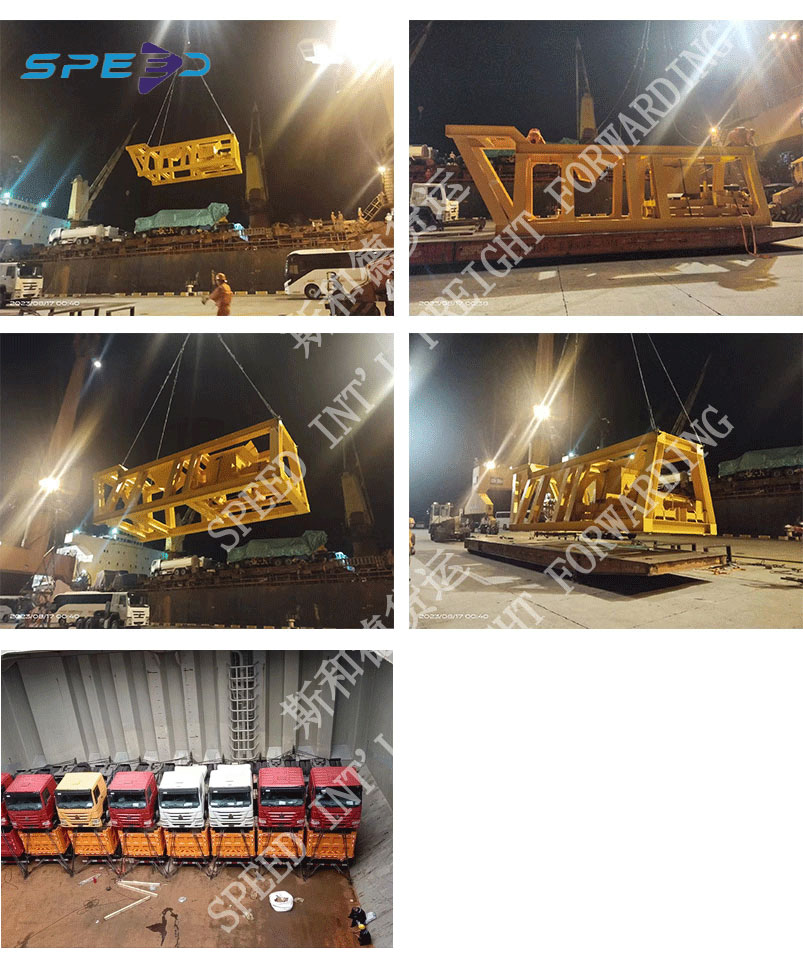Understanding Out of Gauge Containers: Challenges and Solutions in Shipping
2024-09-25
In the world of shipping and logistics, efficiency and precision are paramount. One of the critical aspects of managing cargo transport involves understanding the dimensions and specifications of containers. Among various container types, Out of Gauge (OOG) Containers play a significant role, especially when it comes to transporting oversized cargo. This blog will delve into what Out of Gauge containers are, the challenges they present, and how to effectively manage these unique shipping requirements.
What Are Out of Gauge Containers?
Out of Gauge containers refer to cargo that exceeds the standard dimensions of regular shipping containers. Standard containers come in fixed sizes, typically 20 or 40 feet in length, with specific height and width limitations. However, certain types of cargo, such as heavy machinery, industrial equipment, and large structural components, cannot fit within these constraints.
Out of Gauge containers can be categorized into two types:
1. Length Over Gauge (LOP): Cargo that exceeds the standard length of containers.
2. Width Over Gauge (WOG): Cargo that is wider than standard containers.
These containers are essential for shipping oversized goods that cannot be accommodated in conventional containers.
The Challenges of Shipping Out of Gauge Containers
Transporting Out of Gauge cargo comes with its own set of challenges:
1. Regulatory Compliance
Shipping OOG containers requires strict adherence to various international shipping regulations and safety standards. Depending on the cargo’s size and weight, specific permits and inspections may be necessary. It is crucial for shippers to understand the regulatory landscape in each country involved in the shipping route.
2. Increased Costs
Transporting oversized cargo typically incurs higher shipping costs. This can be due to special handling, the need for specialized equipment, and additional logistics involved in securing and transporting the load. Shippers need to factor in these costs when pricing their services or products.
3. Complex Loading and Unloading
Loading and unloading OOG containers can be complex, often requiring specialized equipment such as cranes or heavy lift vehicles. This complexity increases the risk of damage to both the cargo and the equipment used during the process. Proper planning and execution are essential to mitigate these risks.
4. Route Restrictions
Some transportation routes may have restrictions on the size of vehicles and loads, impacting the shipping timeline. Shippers need to be aware of height, width, and weight limitations on roads and bridges along the transportation route to avoid delays and complications.
Solutions for Effective Management of Out of Gauge Containers
To navigate the challenges associated with Out of Gauge shipping, companies can implement several effective strategies:
1. Thorough Planning and Assessment
Before shipping, conduct a comprehensive assessment of the cargo’s dimensions and weight. This evaluation will help determine the appropriate type of container needed and the logistics required for transportation.
2. Collaborate with Experienced Logistics Providers
Partnering with logistics providers who have experience in handling Out of Gauge cargo is crucial. These experts can help navigate regulatory requirements, secure permits, and provide the necessary equipment for loading and unloading.
3. Utilize Technology
Incorporating technology can streamline the process of managing Out of Gauge shipments. Software solutions can help with route planning, load optimization, and real-time tracking of shipments, ensuring timely delivery and minimizing risks.
4. Safety and Compliance Training
Investing in safety and compliance training for staff involved in the handling and transportation of OOG containers can significantly reduce risks and enhance operational efficiency. Understanding the regulations and safety protocols is vital for everyone involved in the shipping process.
Conclusion
Out of Gauge containers are an essential component of the global shipping industry, enabling the transport of oversized and heavy cargo. While they present unique challenges, proper planning, collaboration with experienced logistics providers, and the use of technology can help mitigate risks and ensure successful delivery. As the demand for specialized shipping continues to grow, understanding the intricacies of Out of Gauge containers will be crucial for businesses looking to optimize their supply chain and meet customer needs. By embracing these strategies, companies can effectively navigate the complexities of shipping Out of Gauge cargo and ensure that their oversized goods reach their destinations safely and efficiently.



